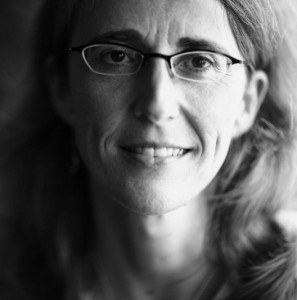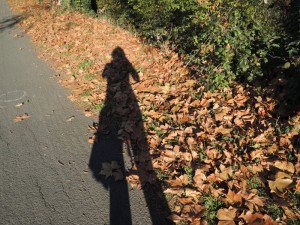On mirror neurons and Schrödinger’s cat: writing as exploration
 Some explore to answer questions. Others explore to ask them.
Some explore to answer questions. Others explore to ask them.
The map is ridiculously simplified, as the three-block walk from the hotel has proven. I cram it in my pocket and turn into the narrow alley that apparently doesn’t exist, stepping willingly into uncertainty. No matter where I end up, I will have seen that façade where heavy beams are embedded between bricks, that man with the red coat to his ankles.
It hasn’t always been easy for me to ignore maps or to accept their inadequacies. But as I get older, it becomes increasingly obvious that, like this rambling walk in a new city, all of life is a journey. Even more, it is an exploration into the unknown. As Antonio Machado put it
Caminante no hay camino, se hace camino al andar.
Walker, there is no path: you make it as you walk.
Life is an exploration, for each day is a new landscape, a new state of mind, a new body, with different creaks and strengths. The day-to-day shifts are minuscule, until you step off a cliff or a lightning bolt strikes you or someone you love. Then you are transported immediately to another land, where everything looks different, because it is, because you are.
According to the Oxford English Dictionary, to explore is to investigate, to look closely at, or to search by going into. As a research oceanographer, every sense of the definition held true. I investigated how the water moved up, down and sideways and the way shafts of light penetrated the ocean surface.
I looked closely at the growth of microscopic plants. I sailed to take the temperature of the equatorial Pacific and of the storm-wracked northwest Atlantic. I listened in on the color of the ocean and the wind strumming its surface, as measured by satellites a thousand kilometers above our planet.
Exploration happens every day for scientists, whether it’s making new observations, refining a technique or looking at collected facts in a different way. Every step opens to another hallway of doors and that to another and so on. Seeing the pieces come together is like suns exploding in sheer exhilaration, because humans have always wanted, and will always want, to know.
Science provides a system to embark into the unknown. With every measurement and every theory proposed to explain our findings we know a little more and we come a little closer to understanding. The yoga sage Patanjali laid out the three tools of knowing: direct observation, deduction, and the words of trusted sources. Although his Yoga Sutras precede the development of western scientific practice, the tools coincide: we collect our observations, interpret the results, and place them in the context of what has come before.
But science is just one way to explore, just one way to know. Writing fiction provides another tool for exploration and a trusted source.
As a source, fiction shows us realities that can’t always be measured. It allows us to see through the eyes of another. It gives us lives imagined and dreamed, invented and created. They are maps of alternate landscapes. They take us outside of ourselves.
Mirror neurons, which fire when we perform an action or when we see that action performed by another, likely play a role in imitation and in learning. Some propose they are the gateway to empathy. While much is still to be learned, mirror neurons offer an intriguing material explanation to how we explore the world, one action, one person, at a time.
 Our mind builds internal maps of what we know and who we are. These maps connect our thoughts to our actions and vice versa. They connect our observations and our selves. They connect our selves and others. As most of us have discovered, a perfect map is impossible. Cartography always implies at least two rounds of interpretation: in the making and in the reading. Only art can connect imagination and reality. It is a map to all that surrounds us.
Our mind builds internal maps of what we know and who we are. These maps connect our thoughts to our actions and vice versa. They connect our observations and our selves. They connect our selves and others. As most of us have discovered, a perfect map is impossible. Cartography always implies at least two rounds of interpretation: in the making and in the reading. Only art can connect imagination and reality. It is a map to all that surrounds us.
Exploring can be done with a single first gaze or by returning time and time again. Heisenberg noted that the observer changes the observed. Art has always known it. There is no single way to tell a story, and no single story to tell. Our idea is Schrödinger’s cat– alive or dead, squirming or purring placidly, a tabby or black as night- until we open the box and spill it onto the page. And then the other cats, the words not chosen, are banished to the dimension of unrealized potential.
Writing is always an exploration. It means acknowledging that every day is different and every blank page holds the map to the unknown. Like Schrödinger’s cat, I can be a trapeze artist, an ethnobotanist, a spy, a mathematician. I can search for El Dorado or become a Penelope for a modern time. All the lives I could imagine- and many many more, are in the box, waiting for me to choose.
Each word, each page, each story unveils a single cat, but as long as I write, there is always another story in which to explore.
—
Marialena Carr writes to explore mythology, art, science, and other mysteries from the world around her. Trained as an oceanographer, she has carried out research, managed science funding, and worked to bridge academia and users on the topic of climate change. Now she has turned to fiction for her further explorations. Born in Spain, she is frequently lost in Toulouse and the New York area, together with her patient husband and several unruly imaginary animals. Find her at her blog on marialenacarr.com, on Twitter @marialenacarr, and at www.facebook.com/MarialenaCarr.
Category: Being a Writer, Contemporary Women Writers, On Writing
Comments (17)
Trackback URL | Comments RSS Feed
Sites That Link to this Post
- Kim Manley Ort | Topics | Revise | April 30, 2016
- Content and Story: A Meditation - Systematic Wonder | March 30, 2016
- Janus and attending the start of all things - Systematic Wonder | January 15, 2014
- Featuring Women Writers on WWWB 2013 - Women Writers, Women Books | December 31, 2013
- On mirror neurons and Schrödinger's cat: writing as exploration - Systematic Wonder | December 23, 2013


























I really love the idea that by writing landscapes we are creating something very like the memory of them within our brains.
Thank you, Cat. How poetic: writing as a construction of memory! Lovely.
There is so much here to keep turning over in the heart. Art itself as the map, and the stunning quotes from Machado and Heisenberg. Thank you, Marialena!
I’m honored that it speaks to you, Bernadette. Thank you so much for reading and for your kind words!
This is lovely, and so true. I’ve read it twice and will probably read it again. Thank you!
Sidney, so glad this felt right to you! Thanks for stopping by.
What a beautiful post! I just love this.
Thanks, Annie! You’re very kind.
What a memorable point about writing AND about life: “Walker, there is no path: you make it as you walk.” I had never seen that quote before. Thanks for sharing it! Such a thoughtful post with much to discuss.
Thank you for your comment. That quote, and the poem by Antonio Machado from which it came is deeply embedded in Spanish culture. It ends with the lines: “there is no path, just the wake left in the sea.”
Thanks for your comment, Lori. I am absolutely thrilled that my reflections resonated for you!
Beautiful post, Marialena! You’ve captured exactly why I started writing fiction – in order to take myself down paths I could not explore in my own life. I particularly like your succinct and lovely description of fiction as consisting of “maps of alternate landscapes.”